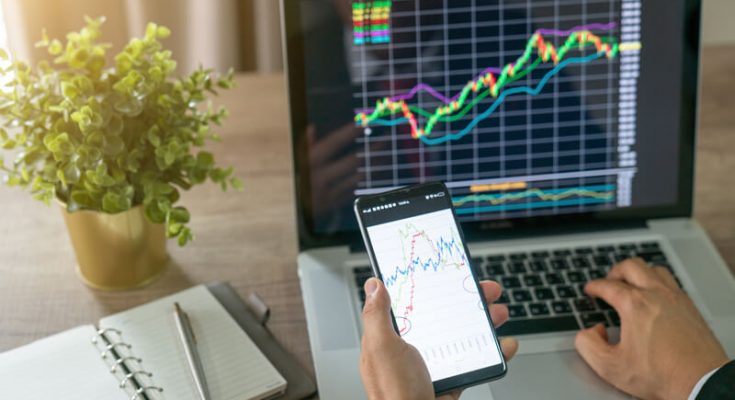Last Vs Bid Vs Ask
Contents
In the bullish trading system, we will see a simple trading system where we will buy an instrument from the support and sell from resistance while the broader market context remains bullish. Moreover, we will use additional indicators like MACD and EMA to increase the trading accuracy. Let’s see how to include bid vs. ask price in determining trading decisions. We Fools may not all hold the same opinions, but we all believe that considering a diverse range of insights makes us better investors. Quantitative Finance Stack Exchange is a question and answer site for finance professionals and academics.
- The smart money wants to ensure before taking a position there are speculators on the other side of the trade.
- Less liquid stocks can have wide spreads which can result in significant slippage.
- A trailing stop order is a variation on a standard stop order that can help stock traders who want to potentially follow the trend while managing their exit strategy.
- In most cases, market makers or specialists will step in and buy or sell shares to maintain liquidity.
- The BID price represents the maximum price that a buyer is willing to pay for a token.
You can use it to see the order book or queue for any given stock. The limit order for Stop Loss will also be placed in the exchange’s order book at a set price when the trigger condition for the BID or ASK is reached. Imagine that in the future John always sets Stop Loss -10% on Ask. At one point the same price action occurs but the token value falls even more instead of reversing.
Day Trading Gaps and Windows
New users often ask what the difference is and why to choose one vs. the other. In this post we will provide answers to this very critical question. The calls are pretty consistent with a spread of around $1.80 and the puts also trade with spreads as high as $1.80. It’s a similar story with the puts where the at-the-money and out-of-the-money puts have a tight spread, but the in-the-money spreads start to blow out.
Moreover, you should follow a sound risk management system to avoid unexpected market behavior. If you are selling a trading instrument, you should set stop loss and take profits in every trade. While developing the SL & TP levels, make sure to consider the bid and ask price. The cost of having an order filled instantly is the premium paid by taking the current bid or ask price on the market.
Why is the spread important?
Taking a look first at SPY we can see that the at-the-money and out-of-the-money calls have a very low spread but that spread gets a lot wider for the in-the-money calls. Let’s put theory into practice and look at the bid-ask spreads for various different underlying instruments. Let’s say we have an option that has a bid of $2.00 and an ask of $2.60 and we want to buy it. Stocks are closed for a long time compared to other markets like Forex, Futures, or Cryptos. Often the Bid and Ask prices can be on different levels than the Last price.
This concept applies equally to https://forex-world.net/ing on the ask, or above the ask. In a rapidly rising market, demand is outweighing supply and therefore you’re in a unique situation as a seller and can often get a better price if you wait it out. On the other hand, when the US housing market crashed in 2008, real estate investors had loads of inventory that they just couldn’t unload. They were overleveraged and desperately needed to sell to recoup any cash they could, or even just to reduce their debt load with the bank. A bid is simply a buyer’s offer to buy at a specific price. When the security is highly traded , the spread will be low.
When to Focus on the Bid and Ask Prices
The https://forexarticles.net/ between bid and ask is called the spread. Conversely, if supply outstrips demand, bid and ask prices will drift downwards. The spread between the bid and ask prices is determined by the overall level of trading activity in the security, with higher activity leading to narrow bid-ask spreads and vice versa. If the current stock is offered at $10.05, a trader might place a limit order to also sell at $10.05 or anywhere above that number.
When the bid and ask are close to the same amount, it means there’s volume and liquidity in the stock. It also means there won’t be such dramatic price swings with each buy and sell. Market makers can potentially profit from the difference between the bid and ask by selling some of their own shares and collecting the difference. Other orders below the best bid or above the best ask sit in the queue until traders buy up all the available shares at the best ask or sell into all the best bids. © Millionaire Media, LLCThe best bid is the highest price a buyer is willing to pay for the security.
Having plenty of https://bigbostrade.com/ means it is much easier to buy or sell the security at a competitive price, especially if the order size is large. On the other hand, when the bid-ask spread is wide, it can be difficult and expensive to trade the security. This is a perfect example of why it is very important to only use limit orders in options trading. The current ask price and current bid price do not guarantee you will get filled here. This is particularly true in high volatility environments and illiquid products. Suppose Dan places a market order to buy 100 shares of AMD.
Hi David, If it’s a spread trade and I’m not getting a fill on the limit order, I will break up the legs and execute them individually. If you’re having trouble getting filled on single orders, that could be a broker issue. Less liquid stocks can have wide spreads which can result in significant slippage. SPY is the best underlying instrument for option traders in terms of bid-ask spreads. The price moves when the liquidity/volume from the current Bid or Ask levels is completely removed.
Currency pairs with a large amount of trading volume are said to be more liquid and have smaller spreads. Less liquid pairs that do not trade so much will have a larger difference between the bid and ask prices and therefore have a larger spread. The difference between the bid price and the ask price is called the spread. When the bid and ask prices are very close, this typically means that there is ample liquidity in the security.
On the buy-side, i.e., the BID would always be in decreasing manner, and the topmost bid rate would be shown on the top of the list. Likewise, the sale price would be in increasing manner, and the topmost ask price will be shown on the top of the list. Could someone explain how a trailing stop loss based on last, bid and ask works? I suggest you get a StocksToTrade subscription if you don’t already have one.
When trading stocks, specially low-cap stocks, always watch the bid and ask and understand how big is the spread. That’s how big are the pending orders there, and how much are buyers and sellers willing to buy or sell at each level. The ask price is the price at which a market maker is willing to sell you an option. Therefore, this is the price at which you will purchase an option. Market makers in R, therefore, have a much better chance of profiting in these wider spreads than those in SPY. Because of this, they are willing to both buy and sell greater quantities of options in R than SPY.
Alternatively, the ask is the lowest price someone is willing to sell their shares for. A difference in price between the bid and the ask, which we call a spread. Veteran traders throw terms like bid vs ask around like NFL players throw a football. Tight bid ask spreads are very important because they help you to get a better fill price. If your spread is too wide then you won’t get as good of a fill. Watch our video on bid vs ask spreads and their importance when trading.
Women In Trading: Options – My new love language
These securities will lure you in with large price moves in a matter of days. Stocks with wide bid vs ask spreads can be risky for many reasons. Whether it’s poor fill price or the inability to exit a trade, you need to be careful when trading them. Consider company AMD; it has a bid of 100 shares at $9.95, and an ask of 200 shares at $10.05. Unless a buyer meets the asking price or a seller meets the bidding price, a trade doesn’t happen. Bid and ask price are important terms that every trader should consider while opening and managing trades.
All trend traders have struggled with this at some point, and many opt to only trade with aggressive limit orders for this reason. They’re taking the risk of getting a worse deal but they get their house immediately. If prices rise 10% in the next six months, they’re ready to sell.
Both the ask size and the bid size of options are in constant flux with the market. Market makers determine the quantity at which they will both buy and sell options by looking at factors such as stock price and supply and demand. Because of this, the ask size is rarely the same as the bid size. Unfortunately, if no orders bridge the bid-ask spread, there will be no trades executed. A situation like this puts the market in a tricky position.





